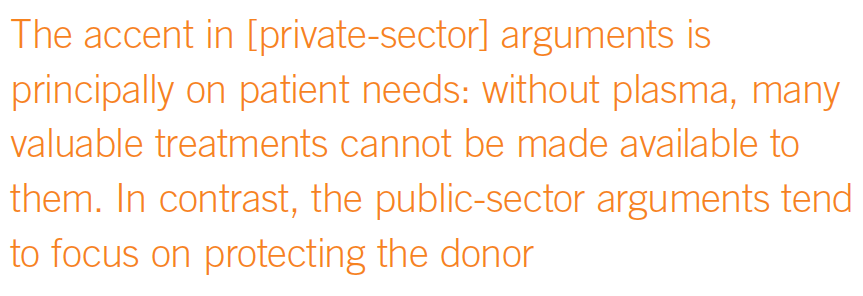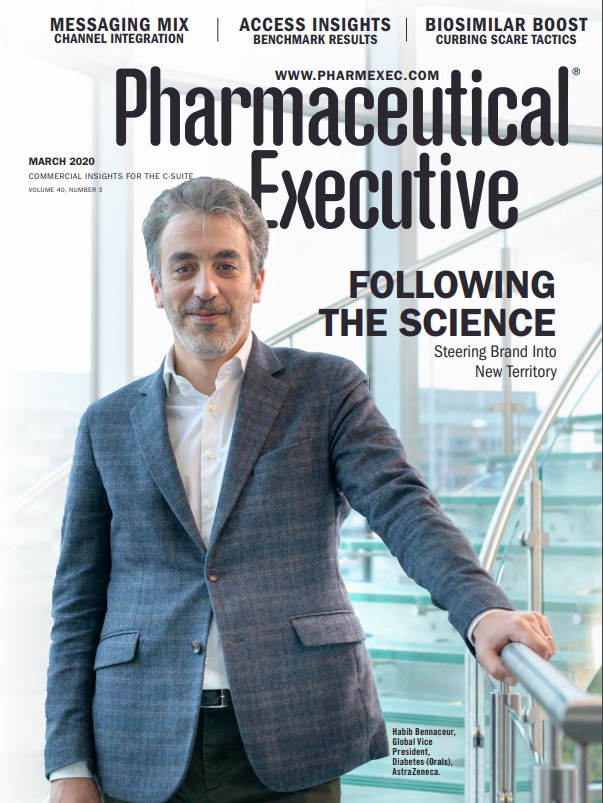Blood Feud Divides Europe Over Plasma Shortfalls
The collection of source plasma for new therapies igniting debate.
Growth in plasma-derived medicinal products is good news for drug developers and for patients-but it is generating a bitter turf war in Europe over how to source the starting material: human blood.
Over the last decade, the use of plasma-derived medicinal products (PDMPs) has widened steadily, with the global market more than doubling to surpass $20 billion by 2016. Demand has leapt further ahead more recently, both with increasingly sophisticated usage of existing products, and with the emergence of new products and new indications. Most strikingly, the use of immunoglobulin has expanded dramatically from treating primary immune deficiency to other conditions, including multifocal motor neuropathy. New specialty plasma proteins have emerged, such as C1 esterase inhibitor for the treatment of hereditary angioedema, and strong surges in use are being seen for and prothrombin complex concentrate as well as alpha-1 antitrypsin. PDMPs are also now finding further uses in secondary immunodeficiency following new cancer treatments.
Supply hurdles
The challenges in supplying the plasma required to sustain this evolution are sending shockwaves through what has for years been a tranquil and traditional corner of the healthcare scene in Europe. Here, in contrast to the US and other regions of the world, blood donors have volunteered their services with altruistic regularity in 1,400 blood establishments handling 20 million blood donations every year. And donors receive no compensation in many countries other than a cup of tea and a biscuit. The predominantly charitable or state organizations that collected blood, primarily for transfusion, also offer some supply of what is known as “recovered” plasma, for therapeutic uses, and also, to a lesser extent, for fractionation into the starting materials for PDMPs. But the advances in science, technology and clinical care-and the resulting demand for plasma-derived medicines-have rendered that model inadequate.
Commercial operators have increasingly set up their own networks specifically for obtaining what is known as “source” plasma for PDMPs. And that is where the differences of approach are now generating real conflicts-between public and private interests, between voluntary and compensated donation, and ultimately between the relative weight to be given to the interests of patients and the interests of collection organizations.
No one disputes the need for more plasma. The European Medicines Agency (EMA) guideline on PDMPs notes how “improvements in protein purification and molecular separation technology have made available a wide variety of products, with medical applications covering a large field, and the therapeutic value of these is unquestioned,” but that “the quantity of plasma for fractionation is limited by the number of donors.” The European Commission, which is trying to steer a middle course between the warring factions, notes that the current legislation is “limited in provisions that help achieve sufficiency,” and that “while the number of private plasma collection centers in the EU has increased in recent years, this is far from sufficient to keep up with increasing demand for plasma derived medicines.” Figures from The Marketing Research Bureau, a consultancy, show that just to meet European demand for polyvalent immunoglobulin, nearly four million liters of plasma had to be imported from the US in 2017 to complement Europe’s own resources of nine million liters. For 2025, the consultancy estimates that this gap will rise to nearly six million liters-more than a third of the total requirement of 15 million liters.
But identifying a problem and agreeing to a solution are two very different challenges-and more particularly in the perennially complex world of European policy formation. The Commission is in the throes of revising its blood-products legislation, and both sides in the debate are ramping up their rhetoric to gain as much as possible from the outcome. The legal intricacies are too arcane to merit detailed attention here- suffice it to offer a couple of examples by way of illustration: PDMPs are covered by the basic 20-year-old EU rules on pharmaceuticals, and so too is any “plasma that is prepared by a method involving an industrial process;” they are also covered by the 15-year-old blood directive; and as if that were not enough, PDMP standards are set in a series of monographs from the European Pharmacopoeia-a separate authority under the aegis of the (also separate) Council of Europe. In addition, EU member states are allowed to apply their own more stringent requirements for PDMPs. Italy, France, and Spain choose to limit their collections of blood and plasma exclusively to domestic clinical needs.
As the quest for higher volumes of plasma intensifies, the traditional blood donor centers say they want to see the law changed in a way that will give them greater protection against disruption from commercial interests.
Dueling reform models
The European Blood Alliance (EBA), an association of non-profit blood establishments, is determined to defend its “voluntary and non-remunerated donation” model, and claims that a Council of Europe agreement- the Oviedo Convention-supports its rejection of financial gain from the human body and its parts. At present, private-sector collection and donor payment is not allowed in many EU countries. In a thinly coded message, EBA says “excellence in blood products supply chain cannot be characterized merely by high productivity and quality,” and it appeals over the heads of everyone else for decisions that will “contribute to a well-functioning professional healthcare system”-in other words, preservation of something like the status quo. It recommends giving the Council of Europe’s currently non-binding guidelines a mandatory effect throughout the EU.
Another public-sector based group, the International Plasma Fractionation Association, is similarly urging “a preference for and commitment to the ‘gift model’ of blood and plasma donation without remuneration” and the non-profit model. There are risks, it says, in a market-related supply system-not least an “erosion and/or fragmentation of a community-based donor population.” The answer to insufficient collection is, it says, for governments to boost the public-sector system.
But the Plasma Protein Therapeutics Association (PPTA), which brings together private-sector manufacturers, as well as collectors of source plasma used for fractionation, sees major inefficiencies in the current arrangements. In addition to manufacturers of plasma-based products, PPTA’s EU members comprise an alliance of 14 organizations that collect around three million liters of plasma at 97 centers in Germany, Austria, Czech Republic, and Hungary-a good achievement, but not enough, it acknowledges. Top of its wish-list is

EU action to promote a network of dedicated centers for collecting plasma specifically for PDMP manufacture in all EU countries. At present, the infrastructure is so patchy-with big gaps in access to the plasmapheresis equipment that permits higher volumes of source plasma collection-that the goal of European self-sufficiency will remain elusive, PPTA says. The group also wants the ban on payment in many EU countries to be lifted too. It points out that plasmapheresis is a more burdensome and longer process (up to 90 minutes per session) than the 15-minute process for a standard whole-blood donation-and that therefore it should at least be possible for some compensation for those donors.
The accent in PPTA arguments is principally on patient needs: without plasma, many valuable treatments cannot be made available to them. In contrast, the public-sector arguments tend to focus on protecting the donor. But these are, in some ways, proxy arguments: at bottom, opening the door to payment and to private-sector collection is seen as threatening a fatal blow to the public sector’s voluntary state-run model; while the private sector perceives an attempt by the public sector to manipulate the review of European legislation in a way that would tie the industry’s hands with red tape in the guise of safety rules.
The outcome will affect more than the interests of a handful of vested interests, because therapy for many conditions for many patients is reliant on adequate supplies of plasma-and at a time of increasing turbulence in international trade, and globalization of health threats, Europe’s patients may find themselves more than ever dependent on European-sourced plasma.
Reflector is Pharmaceutical Executive’s correspondent in Brussels

Addressing Disparities in Psoriasis Trials: Takeda's Strategies for Inclusivity in Clinical Research
April 14th 2025LaShell Robinson, Head of Global Feasibility and Trial Equity at Takeda, speaks about the company's strategies to engage patients in underrepresented populations in its phase III psoriasis trials.
Key Findings of the NIAGARA and HIMALAYA Trials
November 8th 2024In this episode of the Pharmaceutical Executive podcast, Shubh Goel, head of immuno-oncology, gastrointestinal tumors, US oncology business unit, AstraZeneca, discusses the findings of the NIAGARA trial in bladder cancer and the significance of the five-year overall survival data from the HIMALAYA trial, particularly the long-term efficacy of the STRIDE regimen for unresectable liver cancer.
Expanding Immune Response Testing to Support Vaccine Development
April 22nd 2025Nigel McCracken, chief operating officer, Virax Biolabs, discusses the expansion of its ViraxImmune platform into areas such as transplant monitoring, vaccine efficacy, latent virus reactivation, and CAR T cell therapy.